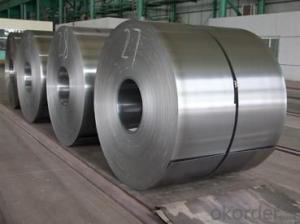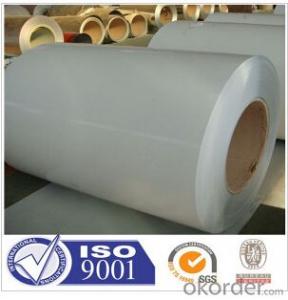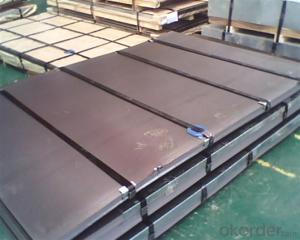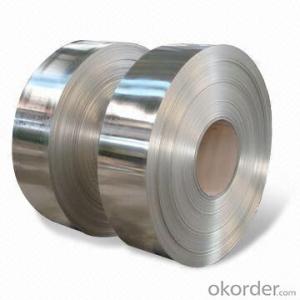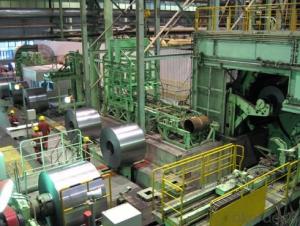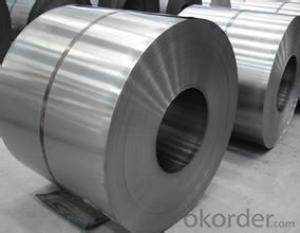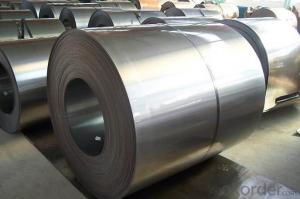COLD ROLLED STEEL COIL-DC01/SPCC
- Loading Port:
- China Main Port
- Payment Terms:
- TT OR LC
- Min Order Qty:
- -
- Supply Capability:
- -
OKorder Service Pledge
OKorder Financial Service
You Might Also Like
SPCC/DC01 COLD ROLLED STEEL
Brief Introduction
Cold Rolled Steel issteel that has been worked below its recrystallization temperature by passingit between a pair of rollers. Recrystallization temperature is the temperatureat which grains in the lattice structure of the metal have been rearranged, leavingit free of strain and deformations. Cold Rolled Steel is pre-treated beforebeing cold rolled with a process known as pickling, which uses strong acids toremove scale and other impurities. The Cold Rolled Steel is then passed throughrollers to reduce its thickness. Most cold rolling takes place in multiplepasses and as the size of the Cold Rolled Steel is further reduced, itsstrength and hardness both increase, but its ductility decreases. After coldrolling, heating the metal up in a process known as annealing can restore someof its ductility. The final Cold Rolled Steel may be manufactured in the formof sheets, strips, bars, or other forms.
Application
It’s widely used inoutdoor and interior decoration, furnishing manufacturing, home appliance,automobile etc.
Main Specification
COLD ROLLED STEEL | |
THICKNESS | 0.2-2MM |
WIDTH | 600-1300MM |
SHEET LENGTH | 0-6000MM |
COIL ID | 508MM OR 610MM |
SURFACE TREATMENT | MATT FINISH/BRIGHT FINISH, OILED/DRY |
ANNEALING METHODS | BRIGHT ANNEAL/BLACK ANNEAL |
COIL WEIGHT | 1-25MT |
Package &Delivery
Package details: Standardseaworthy packing for international delivery.
Delivery: Accordingto the exact quantity of your order.
Advantage
1. High QualitySurface Finish
2. High DimensionalPrecision
3. Excellentmechanical property
- Q: What are the different types of steel coil edge trimming methods?
- There are several different types of steel coil edge trimming methods, including shearing, slitting, and laser cutting. Shearing involves cutting the edges of the coil with a sharp blade, while slitting involves making multiple cuts to create narrower strips. Laser cutting uses a high-powered laser to precisely trim the edges of the coil. Each method has its own advantages and is used depending on the specific requirements of the steel coil application.
- Q: How to solve steel plate storage
- According to the principle of "first in first out" to carry out the turnover, organize the logistics, reduce the large amount of moving plate, reasonable arrangement, easy to steel coil into the use of state.
- Q: How are steel coils inspected for quality control?
- Steel coils are inspected for quality control through various methods. One common method is visual inspection, where trained professionals visually examine the coils for any surface defects, such as scratches, dents, or discoloration. Additionally, non-destructive testing techniques like ultrasonic testing are used to detect any internal defects, such as cracks or voids. Dimensional measurements are also taken to ensure the coils meet the required size and thickness specifications. These comprehensive inspections help ensure the overall quality and integrity of steel coils before they are used in various industries.
- Q: Can steel coils be cut to length?
- Yes, steel coils can be cut to length.
- Q: Climbing ropes used by mountaineers are usually made of nylon. Would steel cable of equal strength as the nylon be just as good? What advantages and disadvantages would it have compared to the nylon?
- steel is NOT as flexible and much slipperier if you fall the nylon stretches to slow the victim but a steel cable would stop short and kill you
- Q: I have a bottle like this* Can u make hot chocolate in it. Can i heat it.I wanna take hot Chocolate to school
- Stainless okorder /... on Hot Drink in Stainless Steel Water Bottle.
- Q: What are the pros and cons of non-stick and stainless steel pots and pans ?Thanks
- Non Stick is good for frying, sauteeing, etc., but I find they don't tend to last as long as regular stainless steel pans because they can get scratched relatively easy if you use metal stirring utensils. Stainless steel is good for soups, stews, or if you plan to use a metal stirring utensil (whisk, fork, etc.). I use both non-stick and stainless steel pots and pans. I think the most useful pots/pans I have are my medium-sized, non-stick frying pan and my small, stainless steel dutch oven.
- Q: Can steel coils be coated with impact-resistant materials?
- Yes, steel coils can be coated with impact-resistant materials.
- Q: How are steel coils used in the production of automotive chassis?
- Steel coils are used in the production of automotive chassis by being processed into flat sheets, which are then cut, shaped, and welded to form the structural framework of a vehicle. The high strength and durability of steel make it an ideal material for chassis construction, providing stability and protection to the vehicle's occupants.
- Q: What are the different methods of edge wave correction for steel coils?
- There are several methods commonly used to correct edge waves in steel coils. These methods aim to eliminate or minimize the occurrence of edge waves, which are deformations that can occur along the edges of steel coils during processing or handling. One of the most common methods is called edge wave flattening. This technique involves using hydraulic or mechanical devices to apply pressure to the edges of the coil, effectively flattening out any waves or deformations. This can be done during the coil processing stage or as a separate step after the coil has been produced. Another method is known as edge trimming. In this approach, the edges of the coil are trimmed or cut to remove any waves or deformations. This can be done through mechanical shearing or using laser cutting technology. Edge trimming not only corrects the edge waves but also ensures that the coil has straight and smooth edges. Additionally, tension leveling is another popular method for edge wave correction. This technique involves subjecting the coil to tension forces, which helps to stretch and flatten out any waves or deformations. Tension leveling is typically done during the processing stage and is effective in correcting both edge waves and other surface defects. Moreover, roll leveling can be employed to correct edge waves in steel coils. This method utilizes a set of rolls to apply pressure to the coil, gradually flattening out any waves or deformations. Roll leveling is a versatile technique that can be used for various types of coil defects, including edge waves. Lastly, technology advancements have led to the development of automated edge wave correction systems. These systems utilize sensors and computer algorithms to detect and correct edge waves in real-time during the coil processing stage. This method ensures precise and consistent correction, minimizing the need for manual intervention and improving overall efficiency. Overall, the different methods of edge wave correction for steel coils include edge wave flattening, edge trimming, tension leveling, roll leveling, and automated correction systems. Each method has its own advantages and can be chosen based on the specific requirements and constraints of the coil processing operation.
Send your message to us
COLD ROLLED STEEL COIL-DC01/SPCC
- Loading Port:
- China Main Port
- Payment Terms:
- TT OR LC
- Min Order Qty:
- -
- Supply Capability:
- -
OKorder Service Pledge
OKorder Financial Service
Similar products
Hot products
Hot Searches
Related keywords
